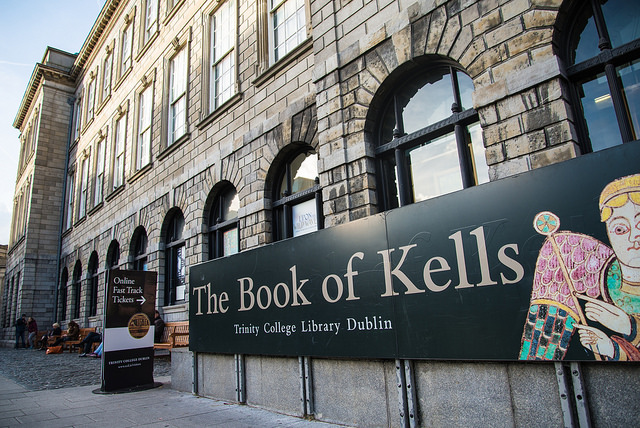The Book of Kells will be taken out of the Old Library from next Monday until March 2020 to allow for conservation works on the display area in which it is housed.
The works are part of a larger conservation and preservation plan for the Old Library.
In an email statement to The University Times, Helen Shenton, an archivist and librarian in Trinity, said the College takes its “role as stewards of this wonderful national treasure very seriously”.
“We apologise in advance for the temporary inconvenience caused and look forward to reopening the new display of this magnificent national treasure for the visiting public and our community of students and scholars”, she said.
Caoimhe Ní Lochlainn, the College head of media relations said in an email statement to The University Times that the Book of Kells exhibition would remain open, with a full-colour replica of the ninth-century manuscript replacing the original. There will be a 15 per cent discount on exhibition tickets while the manuscript is in storage.
“As custodian of the Old Library,” she said, “Trinity College Dublin has made the national historic site a centrepiece of its current fundraising campaign, ‘Inspiring Generations’. It is commencing the first phase of its redevelopment plans to ensure the conservation of the 18th century building and the preservation of its precious manuscripts and research collections for generations to come”.
Speaking to the Irish Times today, a Trinity spokesperson said that the College “purposefully coincided the works with the low season for tourism” to lessen any potential financial impact due to any drop in visitor numbers”.
The Book of Kells is carefully maintained, with the pages turned every six weeks to prevent light damage and to allow visitors to the exhibition to view different sections of the book.
In September 2018, the Book of Kells was removed from its display and replaced with a copy due to “technical issues”.
In an email statement to The University Times at the time, Caoimhe Ní Lochlainn, the College press officer, said: “We have a minor technical issue that we expect to resolve within the coming few days.”
Visitor numbers to the exhibition increased by almost eight per cent between 2018 and 2019, with the site climbing one place in the list of Ireland’s top 10 tourist attractions.
Some 1,057,642 people visited the world-famous medieval manuscript and accompanying exhibition last year, an increase of 7.5 per cent from 983,410 in 2017.







